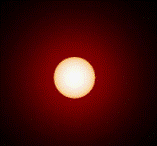Department of Physics and Astronomy: Publications and Other Research

Norman R. Simon Papers
Document Type
Article
Date of this Version
7-20-1993
Citation
THE ASTROPHYSICAL JOURNAL, 412: 183-191,1993 July 20.
Abstract
New observations, made with the Helen Sawyer Hogg telescope at Las Campanas, have been analyzed in a search for double-mode pulsators (RRd stars) in the metal-poor globular cluster, Messier 68. Of the 30 stars studied, nine have been identified as RRd stars; V33, which exhibited the characteristics of an RRd star in 1950, now appears to be an RRc star. Reliable periods and period ratios have been determined for six of the RRd stars. Masses for these RRd stars, calculated from fitting formulas given by Kovács, Buchler, & Marom, range from 0.75 to 0.90 M ʘ depending on the assumed luminosity and metal abundance. These masses are in the same range as those for the RRd stars in M15, whose RRd sample resembles that of M68 very closely. Fourier parameters determined for the light curves of the M68 variables show that the RRc stars in the two clusters are also very similar. In particular, on the plot of phase parameter ϕ31 with period, the M15 and M68 RRc samples are virtually indistinguishable. A comparison of the new M68 observations with observations made 40 yr. ago shows that the periods of some of the stars have changed, but the 40 yr. interval is too short for detecting period changes caused by evolutionary effects.


Comments
Copyright 1993. The American Astronomical Society. All rights reserved.